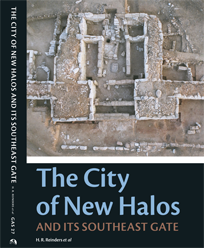New Halos
A Hellenistic city in Thessaly (Greece). In the 4th and 3rd centuries BC two Thessalian cities were known by the name Halos: Classical Halos and Hellenistic New Halos. They were both situated close to the shore of the Pagasitikós gulf in Achaia Phthiotis, in classical times one of the marginal districts of Thessaly (Greece). The dice was loaded against both cities. Classical Halos was besieged, taken and razed to the ground by a Macedonian army in 346 BC. Less than 50 years later, the city of New Halos was founded, probably in 302 BC by Demetrios Poliorketes. Hellenistic Halos was granted only a short live. The city was abandoned in 265 BC, presumably after an earthquake.
News / Updates
June 28th, 2019: Verslaglegging 2018
Het Activiteitenverslag 2018, het Financieel jaarverslag 2018 en de Balans ultimo 2018 zijn geplaatst op de pagina Stichting Thessalika Erga.
June 19th, 2018: Annual report 2017 and annual account 2017 as well as policy plan 2018-2022 have been posted at tab Thessalika Erga
June 26th, 2017: Annual report and annual account 2016 have been posted at tab Stichting Thessalika Erga
June 23rd, 2015: Annual report and annual account 2014 posted at tab Stichting Thessalika Erga
The annual report (activiteitenverslag) 2014 and the annual account (financieel jaarverslag en balans) 2014 were posted at the tab of Stichting Thessalika Erga (Thessalika Erga Trust). In the annual report you may read about the research activities subsidized by the Thessalika Erga Trust; in the annual account about the consts.
August 9th, 2014: Forthcoming publication
‘The City of New Halos and its Southeast Gate’. This volume presents a detailed description and analysis of the structure and layout of the Southeast Gate of New Halos, a Hellenistic city in Thessaly (Greece). The gate was excavated in the period 1995-2006. An impressive enceinte, 4.7 km long and fortified with at least 120 towers, surrounded the lower and upper town of Halos. Excavation of a series of houses in the lower town revealed that the city, probably founded in 302 BC by Demetrios Poliorketes, was abandoned after an earthquake around 265 BC. The Southeast Gate, flanked by two towers, gave access to the city from the south. Numerous artefacts show that after the earthquake the gate complex was used as a large farmstead where agricultural produce was processed and stored. Today, the walls of this well-preserved courtyard gate still stand two to five metres above the bedrock.
Ordering: www.barkhuis.nl Groningen Archaeological Studies 27, hard cover, full colour, 205 pages, printing on demand, ISBSN 9789491431685.


